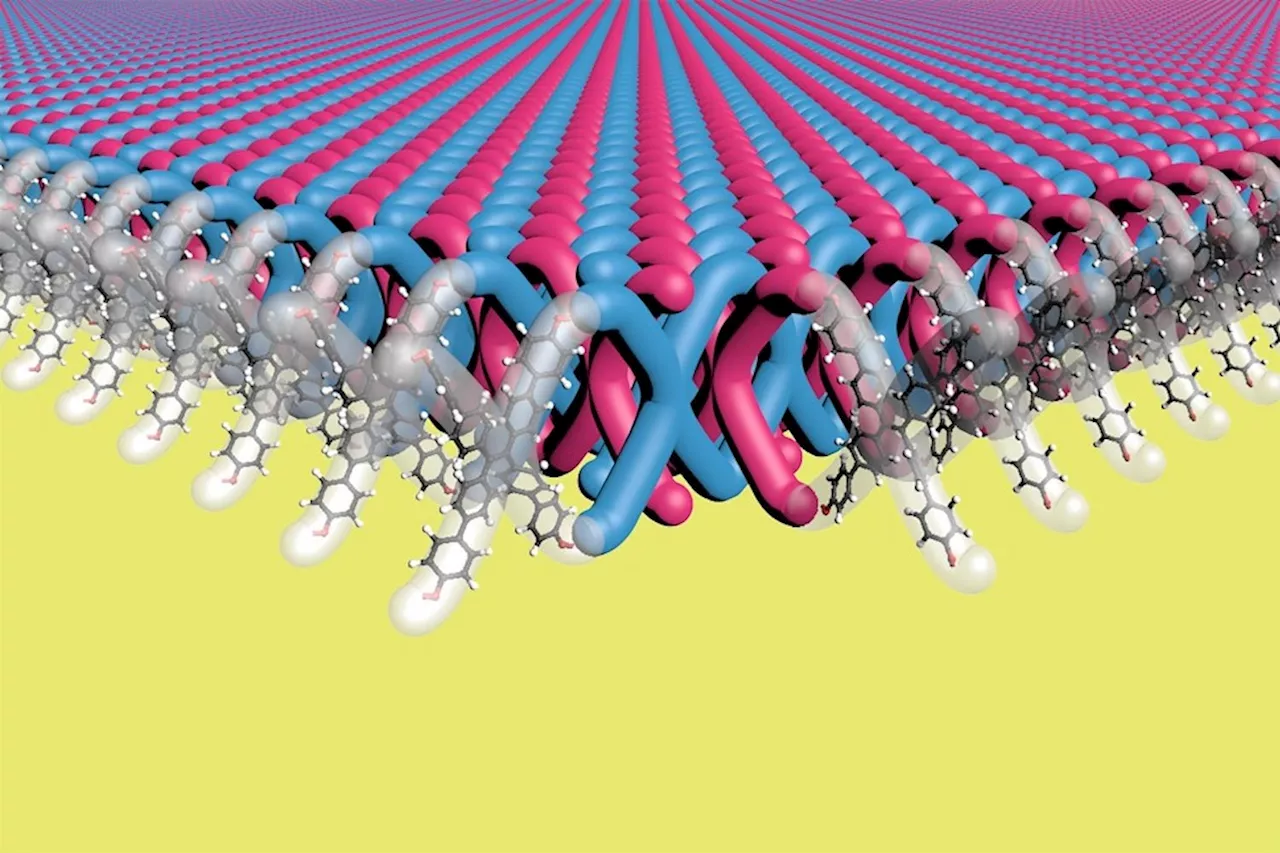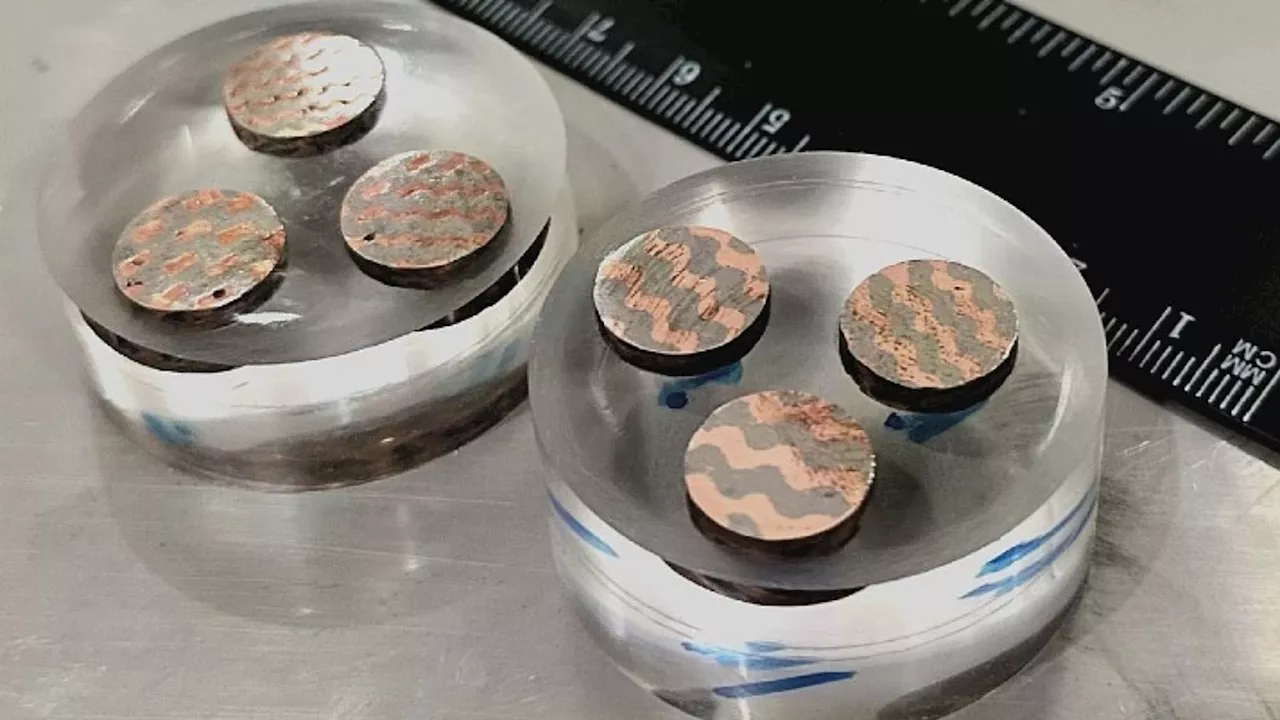Researchers from TU Wien and the University of Science and Technology Beijing have developed a new material called the pyrochlore magnet, which exhibits an extremely low coefficient of thermal expansion over a wide temperature range. This breakthrough is attributed to the material's unique heterogeneous structure, where different regions with varying cobalt content react differently to temperature changes, effectively canceling out the overall thermal expansion.
Most metals expand when their temperature rises. This effect is extremely undesirable for many technical applications. For this reason, the search has long been on for materials that always have the same length regardless of the temperature. Invar , for example, an alloy of iron and nickel, is known for its extremely low thermal expansion . However, how this property can be explained physically, however, was not entirely clear until now.
Now, a collaboration between theoretical researchers at TU Wien (Vienna) and experimentalists at University of Science and Technology Beijing has led to a decisive breakthrough: using complex computer simulations, it has been possible to understand the invar effect in detail and thus develop a so-called pyrochlore magnet -- an alloy that has even better thermal expansion properties than invar. Over an extremely wide temperature range of over 400 Kelvins, its length only changes by around one ten-thousandth of one per cent per Kelvin. \ 'The higher the temperature in a material, the more the atoms tend to move -- and when the atoms move more, they need more space. The average distance between them increases,' explains Dr Sergii Khmelevskyi from the Vienna Scientific Cluster (VSC) Research Centre at TU Wien. 'This effect is the basis of thermal expansion and cannot be prevented. But it is possible to produce materials in which it is almost exactly balanced out by another, compensating effect.' Segii Khmelevskyi and his team developed complex computer simulations that can be used to analyse the behavior of the magnetic materials at finite temperature on the atomic level. 'This enabled us to better understand the reason why invar hardly expands at all,' says Khmelevskyi. 'The effect is due to certain electrons changing their state as the temperature rises. The magnetic order in the material decreases, causing the material to contract. This effect almost exactly cancels the usual thermal expansion.' It had already been known that the magnetic order in the material is responsible for the invar effect. But only with the computer simulations from Vienna, it became possible to understand the details of this process so precisely that predictions for other materials could be made. 'For the first time, a theory is available that can make concrete predictions for the development of new materials with vanishing thermal expansion,' says Sergii Khmelevskyi. \ In order to test these predictions in practice, Sergii Khmelevskyi worked together with the experimental team of Prof. Xianran Xing and Ass. Prof. Yili Cao from the Institute of the Solid State Chemistry of the University of Science and Technology Beijing. The result of this co-operation has now been presented: The so-called pyrochlore magnet. In contrast to previous invar alloys, which only consist of two different metals, the pyrochlore magnet has four components: Zirconium, niobium, iron and cobalt. 'It is a material with an extremely low coefficient of thermal expansion over an unprecedentedly wide temperature range,' says Yili Cao. This remarkable temperature behaviour has to do with the fact that the pyrochlore magnet does not have a perfect lattice structure that always repeats itself in exactly the same way. The composition of the material is not the same at every point, it is heterogeneous. Some areas contain a little more cobalt, some a little less. Both subsystems react differently to temperature changes. This allows the details of the material composition to be balanced point by point in such a way that the overall temperature expansion is almost exactly zero. The material could be of particular interest in applications with extreme temperature fluctuations or precise measuring techniques, such as in aviation, aerospace or high-precision electronic components
Thermal Expansion Materials Science Pyrochlore Magnet Invar Computer Simulations Nanotechnology
United States Latest News, United States Headlines
Similar News:You can also read news stories similar to this one that we have collected from other news sources.
 Scientists Develop Revolutionary 2D Material With Strength of Steel and Flexibility of FabricResearchers at Northwestern University have created a groundbreaking 2D material with exceptional strength and flexibility, potentially revolutionizing industries like body armor and ballistic fabrics. The material, built on a nanoscale level, features a unique structure of mechanically interlocked molecules, offering unparalleled toughness and resilience.
Scientists Develop Revolutionary 2D Material With Strength of Steel and Flexibility of FabricResearchers at Northwestern University have created a groundbreaking 2D material with exceptional strength and flexibility, potentially revolutionizing industries like body armor and ballistic fabrics. The material, built on a nanoscale level, features a unique structure of mechanically interlocked molecules, offering unparalleled toughness and resilience.
Read more »
 As bird flu concerns grow, scientists race to develop new vaccinesBerkeley Lovelace Jr. is a health and medical reporter for NBC News. He covers the Food and Drug Administration, with a special focus on Covid vaccines, prescription drug pricing and health care. He previously covered the biotech and pharmaceutical industry with CNBC.
As bird flu concerns grow, scientists race to develop new vaccinesBerkeley Lovelace Jr. is a health and medical reporter for NBC News. He covers the Food and Drug Administration, with a special focus on Covid vaccines, prescription drug pricing and health care. He previously covered the biotech and pharmaceutical industry with CNBC.
Read more »
 Scientists Create New Composite Material for Nuclear Fusion ReactorsRussian scientists have developed a novel tungsten-copper composite material for use in plasma-facing components of nuclear fusion reactors. This innovative material, created using hybrid additive manufacturing, addresses the challenges of tungsten's brittleness and thermal expansion mismatch with other metals. The composite exhibits superior heat dissipation and mechanical properties, paving the way for more efficient and robust fusion reactor designs.
Scientists Create New Composite Material for Nuclear Fusion ReactorsRussian scientists have developed a novel tungsten-copper composite material for use in plasma-facing components of nuclear fusion reactors. This innovative material, created using hybrid additive manufacturing, addresses the challenges of tungsten's brittleness and thermal expansion mismatch with other metals. The composite exhibits superior heat dissipation and mechanical properties, paving the way for more efficient and robust fusion reactor designs.
Read more »
 DNA Molecule Manipulation Yields Sharper ImagesScientists develop a new method to enhance image resolution by using DNA molecule manipulation techniques.
DNA Molecule Manipulation Yields Sharper ImagesScientists develop a new method to enhance image resolution by using DNA molecule manipulation techniques.
Read more »
 Scientists Develop Groundbreaking Device for Water Desalination Using Solar Power and Recycled TiresA new invention from Dalhousie University could provide a sustainable solution to global water scarcity.
Scientists Develop Groundbreaking Device for Water Desalination Using Solar Power and Recycled TiresA new invention from Dalhousie University could provide a sustainable solution to global water scarcity.
Read more »
 Scientists Develop Wearable Devices for Rich Tactile SensationsResearchers at MPI-IS have created CUTE wearable devices that can produce a wide range of tactile sensations, going beyond simple vibrations. These devices have the potential to revolutionize how we interact with technology in fields like assistive technologies, VR, and more.
Scientists Develop Wearable Devices for Rich Tactile SensationsResearchers at MPI-IS have created CUTE wearable devices that can produce a wide range of tactile sensations, going beyond simple vibrations. These devices have the potential to revolutionize how we interact with technology in fields like assistive technologies, VR, and more.
Read more »
